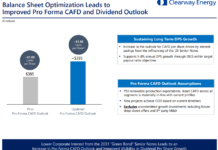by Sean Kidney
Earlier this month CitiBank (NYSE:C) and Bank of America Merrill Lynch (BoAML; NYSE:BAC) launched, via a special EuroWeek report on ‘sustainable’ capital markets, a “Framework for Green Bonds“. This is potentially a big development.
In the paper the two banks laid out a ‘vision’ for the green bonds market and called for a Green Bonds Working Group of issuers, dealers and investors to be formed to drive the evolution of the nascent market. The paper calls for debate about the green bond market, especially about how to guarantee that green bonds are more than just a coat of greenwash. Hear hear!
Citi and BoAML included an open invitation for banks, investors and fund managers to join a Steering Committee for a Green Bonds Working Group. JP Morgan (NYSE:JPM) and Morgan Stanley (NYSE:MS) are the first banks to join. Also invited are ratings agencies, NGOs, regulators and the like.
The paper proposes a voluntary “framework” for the issuing of green bonds (a.k.a. climate bonds), where issuers and banks commit two key things:
1. Creating transparency on the actual use of funds, and reporting on that use.
2. That issuers should use and refer to an authoritative, third party list of criteria for assets that can be included in a green bond.
The main point the framework asserts is that green bonds are about the “green” qualities of the underlying asset, not whether a company is relatively green or not. Bonds have to be linked to actual wind farms or green buildings, or projects to build them. This means that a company does not have to score well in ESG or green rating systems to be able to issue green bonds – they just have be building green kit. That – which is also the Climate Bonds Standard approach – allows a much wider universe of companies that can issue green bonds.
(Note that some of the EuroWeek journalists writing elsewhere in the report haven’t quite got this yet; they’re still thinking the idea is for “complicated” company ratings. But in fact a physical asset approach should end up being very simple for issuers. The complexity is in developing the simple criteria.)
That, of course, does raise the question of what is meant by green kit.
The paper then references five possible taxonomies for issuers to use: OECD, World Bank (BRD), IFC, EIB and the Climate Bonds Taxonomy (yes, we were involved in some of the discussions around the Framework). It allows that further credible taxonomies may arise.
There’s not a lot of difference between these taxonomies; they are all coming from the same position and are all about climate investments. But there are differences in the level of practical detail provided and underlying regimes, such as reporting requirements.
At Climate Bonds we’ve focused on developing a Climate Bonds Taxonomy to both explain what we mean by “investments important to a rapid transition to a low-carbon and climate resilient world”, and to signal where we’ll be rolling out detailed eligibility criteria under the Climate Bonds Standard. You’ll find more explanation of how it all works on the Taxonomy page.
What the Green Bonds paper doesn’t do is call for certification or verification, although it allows that this may be a further market development.
Our view is that in the corporate market, specifically for “asset-linked” bonds modelled on the World Bank’s Green Bonds, third party verification will be important to trust. The Climate Bonds Standard is pitched as a gold-level but straightforward certification scheme, designed specifically to add credibility to corporate green bonds.
Here is the full text of the Green Bonds paper: if you have thoughts or comments please let me know, or use the comments function at the bottom of the web site page for the blog. The more discussion at this stage, the better.
Sean Kidney is Chair of the Climate Bonds Initiative, an “investor-focused” not-for-profit promoting long-term debt models to fund a rapid, global transition to a low-carbon economy.








